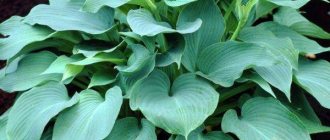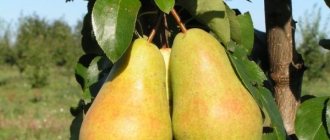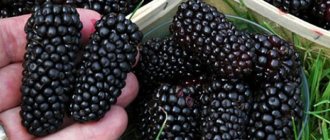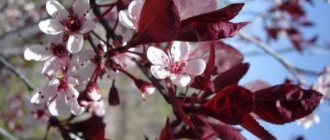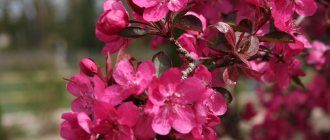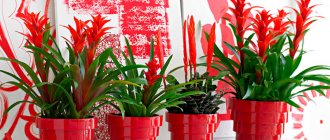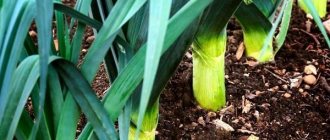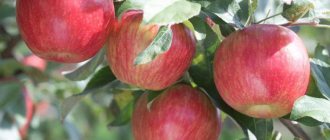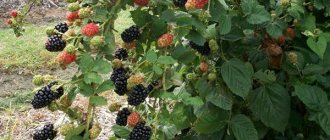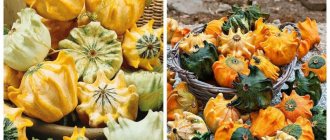In autumn, the orchard is painted in various bright colors, ranging from yellow-green to reddish-burgundy with shades of crimson. But there are plants that, regardless of the time of year, remain in their original purple hue. Such “crops” are ornamental apple trees with red leaves.
Many gardeners plant plants not only for the purpose of harvesting, but more to decorate their landscape design. To grow such a tree, you will first need to select a variety, as well as familiarize yourself with the general rules for their care and maintenance.
Royalty variety and its features
A variety of purple apple tree - Royalty is a hybrid from the Niedzwiecki apple tree. For an ornamental tree, the type of plant is quite low, its height reaches only 5-6 m, but the width of the crown reaches 5 m. With proper pruning, an apple tree can be turned not into a tree, but into an extensive shrub.
While the plant is considered young, it is quite compact, but when the apple tree reaches 5-6 years old, it is considered an adult plant, it becomes quite spreading and voluminous. Therefore, the variety will require specific pruning and care.
Features of the variety:
- The foliage of the plant is purple-red, the buds differ slightly in tone. The oval-shaped leaf blades gradually change color in the fall, becoming redder.
- The plant blooms in the second half of May, lasting only 2 weeks. The buds, when opening, acquire a significant size and emit a specific delicate aroma that fills the air in the garden.
- The resulting fruits do not differ in quality; they are small, sour and not suitable for consumption.
- The shrub is frost-resistant and also easily tolerates drought. Thanks to this, royalty can be planted on any territory of Russia.
The main thing is that in order to have a beautiful ornamental plant, it is recommended to carry out preventive spraying with chemicals to prevent infection by pests and pathogenic bacteria.
Compatibility with other plants
Meadows with decorative apple trees planted in a small group look beautiful. The free space is filled with strawberries, raspberries or other berry bushes. Also used as background plants are iris, peony, sweet tobacco and daisies. Along the paths a mixborder of decorative varieties of apple trees, strawberries, chives, and tenacious trees is planted. Low-growing plants decorate the group planting in the first level.
The garden planting is used as a hedge along with Japanese quince, blackberry, hops and virgin grapes. In the Japanese garden, the combination of ornamental apple tree, lemongrass, damson, chaenomelis and other plants has already become a classic. It can be supplemented with several varieties of spirea, weigela or Japanese kerria.
The original combination of a bizarre crown and interesting leaf color combines decorative apple trees, catalpas with yellow and red pods, fieldfare, barberry and lilac. By planting a composition according to height, duration of flowering and shade of inflorescences, you can create a flowerbed that will change and refresh the landscape over several seasons.
In the company of fruit bushes (raspberries, currants, serviceberry) the decorative apple tree looks wonderful. This group of plants is also suitable for a low hedge or border. Beautiful flowering followed by the appearance of fruits makes any garden rich and symbolic.
Apple tree Rudolph and its description
The apple tree does not have a specific growth, its height reaches only 5-6 m. Moreover, as the plant grows older, the crown of the plant becomes more spreading and bulky. In the spring, the plant produces large buds, from which white-pink flowers appear. They are so large that they almost completely block the branches and leaf blades from view.
After flowering, the plant forms small, up to 3 cm in diameter, yellowish fruits.
It is strictly not recommended to consume them fresh. It is better to try their taste in the form of canning for the winter. The main thing is that they look interesting against the reddish background of the foliage in the form of yellow suns throughout the tree. They tend to stay on the branch for a long period without falling off.
For quality care, you will need to periodically trim excess foliage. In spring and autumn, it is necessary to carry out sanitary removal of excess growth, as well as formative pruning.
Makamic apple tree
The plant is tall - can stretch up to 7 m in height. At the same time, it has a ball-shaped crown. The foliage on the apple tree is oval in shape and is distinguished by a change in color: from purple at the time of blooming to rich green, darkening by the end of autumn.
The flowers on the tree are very beautiful, purple in color, and have a double shape. After flowering, small fruits are formed, up to 2.5 cm in diameter, red in color.
Features of cultivation:
- The plant prefers fertile soils with good lighting. It is recommended to plant seedlings on a personal plot in the spring.
- For rapid growth, it is worth feeding the tree periodically: with nitrogen fertilizers in spring and autumn. Potassium and phosphorus, and water abundantly.
- In the spring, it is necessary to carry out formative pruning, as well as cut off the affected areas, as well as damaged shoots. Z
- It is recommended to protect the trunk from rodents, and spray it against insect pests during the spring and summer.
Care
Caring for an ornamental apple tree is quite simple and differs only slightly from caring for familiar garden varieties. The Weeping apple tree is immune to brown spot, but requires additional protection from scab and powdery mildew. These fungal diseases often affect all parts of the tree, so preventive spraying with fungicidal preparations must be included in the complex of care measures.
Top dressing
Nitrogen fertilizers are applied twice during the season. The first time was at the beginning of growth and development, in May. The second time fertilizing with nitrogen is added in mid-summer. These two fertilizers are important to provoke the development of powerful growths that will make up the crown.
After 3-4 years of development, it is necessary to reduce the amount of nitrogen. This is important for the plant to begin to bear fruit. For full development, mineral foliar fertilizers can be applied.
Watering
It is important to apply sufficient water under the trees. Proper watering is the key to the health of the Weeping apple tree. Usually it is enough to add moisture three times a season, in the spring, during the ripening of fruits and in the fall. The standard amount of water is 30-50 liters for each tree. But if groundwater is close, then the amount of water decreases.
Watering apple trees in summer.
Trimming
Formative pruning is carried out every year in the spring. All branches that are too long, damaged or frozen are removed. If there is excess growth, shoots can be cut off in the fall. However, it is important to be careful not to cut off fruiting shoots.
Characteristics of the Ola variety
By the standards of an ornamental plant, the variety of red apple tree is not tall, not reaching a height of 5 m, but at the same time the crown of the plant grows by this amount. The culture is distinguished by its leaf blades. They are green in color, but also have a brilliant shade of purple.
The flowering of the plant begins in May, covering the entire area of the tree with beautiful large pink buds.
Afterwards, fruits form in place of the flowers. The apples are small - only 3 cm in volume; they stay on the branches for a long time and do not fall off.
Description of varieties: distinctive features
There are many ornamental apple trees of different varieties and they all have their own distinctive features. Let's look at the most popular varieties of these trees.
Helena
This variety is distinguished by medium-sized burgundy foliage and violet-crimson flowers. The tree blooms in the second half of spring. This apple tree has small sweet and sour fruits, and the height of the tree does not exceed 4 m. The plant adapts well even in a cold climate zone.
Royal Beauty
A beautiful and original tree, the branches of which hang beautifully, reminiscent of a willow. The height of this apple tree does not exceed 3 m, and the crown can take on an oval shape without regular pruning. This plant has gorgeous crimson blooms that last for about 2 weeks in early May. In spring, apple tree leaves are purple in color, and in autumn they are burgundy.
Ola
An unusual apple tree up to 5 m high and wide. It has beautiful shiny purple-burgundy foliage and pink flowers. In May they tame the entire plant. The tree resembles a large flower ball. The apples of this variety are small and red. Apples remain on the tree for a very long time. The fruits of the Ola variety can be eaten, which is rare among ornamental species. They make delicious twists.
Makamic
This apple tree has a beautiful spherical crown, small red apples and spectacular purple-red blooms. The leaves can change their color from purple to emerald. This is a fairly tall plant, reaching a height of 7 m.
Features of the Makovetsky variety
A variety of apple tree that does not extend above 5 m. Its crown has a rounded shape, almost spherical, but at the same time it amazes with the density of its foliage.
The leaf blades have a reddish tint.
In May, lush pink flowers bloom on the branches, each reaching 5 cm. The main difference of the variety is that it can withstand significant cold weather.
Chinese apple tree, its description
Chinese is an interesting variety that cannot help but attract glances and interest. This is an American variety of apple tree, but originally grown in Siberia: it was zoned in the Siberian regions, mainly in the northwest.
Its description is as follows:
- The apple tree got its name due to the elongated shape of the fruit.
- Crown – pyramidal or vertical.
- The foliage is distinguished by its large format and dark green tint. During flowering, large white inflorescences bloom.
- After flowering, numerous apples are formed on the crown, no more than 3 cm in diameter, 20-25 grams each. each.
- From each tree, under favorable living conditions, you can collect 200 kg. apples
- The shape of the fruit is ovoid, they are often confused with plums.
- Ripening occurs in late August. It is recommended to collect them in advance so that they do not fall and let them sit for 21 days.
The main purpose of the fruit is primarily decorative, as well as harvesting for processing into jam and making compotes.
Reviews from gardeners
Not all gardeners risk planting ornamental varieties of apple trees on their property. But those who tried to plant Weeping left reviews about it.
Nikolai: “The edge of our plot ends with a pond, so we decided to decorate it with a beautiful tree. The Weeping Apple Tree looks very elegant in spring, completely covered with bright flowers. In autumn it is decorated with small red apples like beads. I don’t have any worries, I only spray against fungus in the spring when I’m cultivating my own in the garden.”
Marina: “My husband and I bought a dacha where this apple tree grows. At first they wanted to cut it down completely, because the condition of the tree was very bad. But they regretted it, cut off the extra branches in the fall, then in the spring and fertilized it well. It was as if the apple tree had been replaced - such beauty awaited us in the spring that we were delighted.”
Konstantin: “We were at our friends’ dacha, the children picked apples from the tree and tried them. My wife got scared and thought it was suddenly not edible and what else would happen. But they turned out to be not just good, but excellent in taste. We decided to plant the Weeping variety for ourselves. Now we have a beautiful tree on the plot, the children eat the fruits, the wife makes jam, and I make cider.”
Apple tree variety Royal Beauty
The variety is a hybrid that is characterized by rapid growth rates. Usually the plant does not exceed 2-3 m in height. The foliage of the plant on the upper side remains purple in spring, and by autumn it becomes crimson.
Flowering begins quite early compared to other varieties - in early May.
The dark red buds turn into large crimson flowers that emit a fragrant scent. The crown, in the absence of pruning, becomes spherical or oval. But if you shape it correctly, its branches resemble a weeping willow in their drooping way.
Niedzvetsky apple tree
One of the varieties of apple trees with bright red foliage. It is currently on the verge of extinction. The territory of its mass distribution is Central Asia.
Features of the structure:
- The height of the plant varies from 2 m to 6.
- The main difference from other decorative apple trees is the presence of anthocyanin (red pigment) in all parts and cellular structure: flowers, seeds, fruits, including skin and pulp.
- There is also a red tone in tree bark and even wood.
- Plant surface: trunks and branches are covered with dark purple bark.
- The foliage on the plant has an oval shape, which reaches 4 cm in width and 8 cm in length. On the lower part of the leaf blade there is slight pubescence, which also covers the surface of the petiole. The tone of the leaf blades is dark green with a red tint present.
- The crown of the plant is spherical. Inflorescences up to 5 cm in size are formed on the branches, which, when blossoming, expose bright scarlet buds to the sun's rays.
- The plant blooms starting from the second half of May for 14 days.
- An apple tree can bear fruit for the first time only 5 years after planting for permanent residence. The fruits are red in color, each weighing up to 200 grams.
Apple tree Helena
The height of the tree is small, the plant does not stretch more than 4 m, even if it is well cared for and constantly watered. The deciduous plates of the apple tree are not large in size, only up to 7 cm in length, and have a dark pink tone.
The variety has the ability to resist diseases, pests and drought.
Flowers begin to form and gradually open from the end of April. They are large and purple in color. In their place, red apples form over time.
They can be eaten, they have a sweet and sour taste, and they also give off a pleasant rich smell. The main feature is the ability to plant seedlings in areas where winters are harsh and summers are not too warm.
Useful video about the Niedzwiecki apple tree:
Application in landscape design
It’s hard to imagine Japanese style, as popular as it has been recently, without the symbol of this country - sakura. But the sophisticated plant does not grow in harsh climates; designers replace it with an equally luxurious decorative apple tree. Their lush flowering and pleasant aroma are very similar. Apple bushes, buried in white foam or a scarlet blaze of flowering, harmoniously combine with Sakhalin cherries, Ussuri plums and Manzhurian apricots. Entire clearings are allotted to them, where garden plantings fulfill their important mission - decorate the garden.
Methods for propagating apple trees
To grow a decorative red-leaved apple tree, you can use several methods. Each method has its own advantages and disadvantages:
- By seeds - the method is carried out only to obtain hybrid or new forms. Beginner gardeners are better off trying other methods.
- By cuttings - you can get a young seedling using a scion, when a bud from the required variety is grafted onto a wild or unwanted plant. You shouldn’t have much hope for this method, but in some cases gardeners are able to grow an excellent tree with the existing characteristics and fruits of the grafted variety.
You can also grow a seedling from a cutting placed in the ground. With proper care, the plant takes root and grows into a full-fledged tree with maternal qualities present.
Decorative apple tree with red leaves in landscape design - 10 best varieties
Ornamental apple trees have many advantages over other varieties:
- frost resistance;
- drought resistance;
- ability to grow in the most unfavorable conditions.
Decorative varieties are undemanding to the soil on which they grow. Trees growing on fertile and fresh soil produce abundant flowering and fruiting. However, even when grown on depleted soil, trees can be attractive but slower growing. Ornamental apple trees love good lighting. Even a slight shade can affect the number of flowers and their brightness, as well as the abundance of fruits.
How to care for trees?
In order for the tree to grow spreading and powerful, it is necessary to provide high-quality care. Without care and attention, red-leaved ornamental apple trees lose their impressive appearance and turn into an ordinary dull apple tree.
To maintain its original appearance, it is recommended to follow the following care rules:
| Care | Rules |
| Top dressing | It should be applied with knowledge of the qualities and type of soil. If the soil is sandy, then in the spring you will need additives with a large amount of nitrogen, but such fertilizing is not suitable for black soil. Foliar application of nutrients should also be carried out. It is necessary to fertilize the first leaves, then during flowering and fruit formation. In summer it is necessary to feed every 2 weeks. And in the fall, carefully monitor the plant and track what is missing for the normal growth of the apple tree. |
| Watering | You should not constantly add nutrient moisture when water is at hand. For proper watering, just adding moisture 3 times is enough, but provided that the soil is saturated approximately 80-90 cm deep. Watering is carried out: in early summer, with the beginning of flowering, then in mid-July, when the fruits form. The latter should be carried out in October, for moisture-recharging irrigation before frosts. |
| Loosening around the trunk | This is necessary to remove weeds, as well as to loosen the crust on the surface from periodic watering, which blocks the possibility of normal oxygen supply to the rhizomes. |
Landing
Most often, planting is carried out in the spring. There are no special requirements for a decorative apple tree; it is completely similar to planting ordinary ones. The pit is prepared in advance, with fertilizers and drainage.
Planting a decorative apple tree.
If you choose the right place, then some of the work will be reduced in the future. Poor soil will not be the best place for beautiful trees, but it can also be fertilized, thereby brightening up this disadvantage. But places with excess moisture should definitely be avoided.
All about pruning
Pruning is carried out so that the plants do not thicken themselves in the first place, so as not to provoke the development of diseases that form due to the lack of ventilation inside the skeletal branches.
Several types of pruning are carried out: formative, rejuvenating and sanitary.
The latter is most often carried out in the fall to prepare the plant for wintering without the presence of pests. It is also necessary to remove excess growth in the spring. During the winter, the tree may suffer from a large volume of snow mass and some of the branches may break off.
Crown formation is carried out using several methods. The following forms can be formed in a plant:
- Tiered discharged.
- Fusiform.
- Cup-shaped.
- Vertical palmette.
The main thing is that all methods are aimed at providing the plant with the correct balance between the central part (trunk) and the branches extending from it.
Diseases and pests
The reddish tint of the foliage is a warning sign for pests. Thanks to this, harmful parasites rarely appear on the apple tree. But in the absence of normal care, the plant can be affected by the following pests:
- Green aphid.
- Apple flower beetle.
- Hawthorn.
- Apple sucker.
- Codling moth.
If a small number of pests are detected, they must be immediately neutralized manually. If the population was detected quite late and the parasites managed to capture most of the tree, it is necessary to turn to chemicals.
You can try using folk remedies, but in most cases they are not effective. Therefore, you should spray the plant with Fufanon, Iskra, Lepidocide, Bitoxibacillin or Alatar.
Useful video about ornamental apple trees:
In addition to pests, the following diseases tend to develop on apple trees:
- Scab.
- Fruit rot.
- Antonov fire or black cancer.
- Powdery mildew.
- Rust.
To prevent the formation of diseases, it is important to carry out preventive measures such as spraying with chemical fungicides in a timely manner. Constant monitoring of the condition of the apple tree will allow you to get rid of pathogenic bacteria or parasites in time and save the plant from death.
